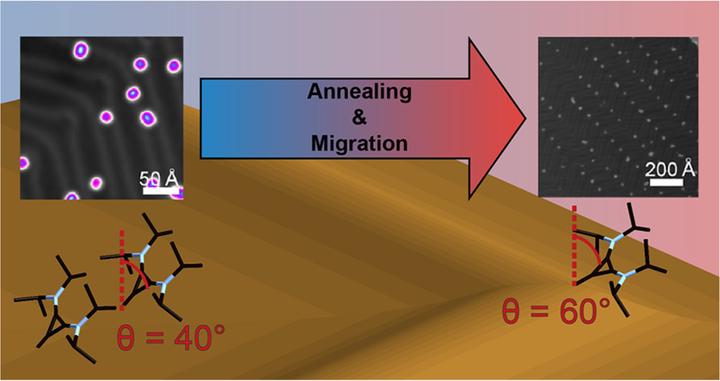
Abstract
The creation of stable molecular monolayers on metallic surfaces is a fundamental challenge of surface chemistry. N-Heterocyclic carbenes (NHCs) were recently shown to form self-assembled monolayers that are significantly more stable than the traditional thiols on Au system. Here we theoretically and experimentally demonstrate that the smallest cyclic carbene, cyclopropenylidene, binds even more strongly than NHCs to Au surfaces without altering the surface structure. We deposit bis(diisopropylamino)cyclopropenylidene (BAC) on Au(111) using the molecular adduct BAC-CO2 as a precursor and determine the structure, geometry, and behavior of the surface-bound molecules through high-resolution X-ray photoelectron spectroscopy, atomic force microscopy, and scanning tunneling microscopy. Our experiments are supported by density functional theory calculations of the molecular binding energy of BAC on Au(111) and its electronic structure. Our work is the first demonstration of surface modification with a stable carbene other than NHC; more broadly, it drives further exploration of various carbenes on metal surfaces.